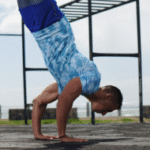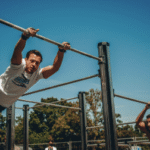Calisthenics for Injury Prevention: Strengthen & Protect Your Body
Calisthenics, with its focus on bodyweight training and functional movements, can be a powerful tool for injury prevention. By strengthening key muscle groups, improving joint stability, and enhancing body control, calisthenics helps build a resilient and robust physique that’s less prone to injuries. Here’s a detailed look at how calisthenics can contribute to injury prevention:
How Calisthenics Prevents Injuries
Strengthening Muscles: Calisthenics exercises engage multiple muscle groups simultaneously, leading to balanced strength development. Strong muscles provide better support for joints, reducing the risk of strains, sprains, and other injuries.
Enhancing Joint Stability: Calisthenics movements often require stabilizing muscles around joints to work harder, leading to improved joint stability and resilience. This can protect against common injuries like ankle sprains, knee pain, and shoulder instability.
Improving Balance and Coordination: Many calisthenics exercises challenge your balance and coordination, enhancing proprioception (body awareness) and reducing the risk of falls and related injuries.
Promoting Core Strength: A strong core is essential for overall stability and injury prevention. Calisthenics exercises like planks, hollow body holds, and leg raises effectively target the core muscles, providing a solid foundation for movement and reducing the risk of lower back pain.
Increasing Flexibility: Calisthenics exercises often involve a full range of motion, promoting flexibility and reducing the risk of muscle strains and tears.
Functional Movements: Calisthenics exercises often mimic natural movement patterns, improving functional strength and making everyday activities easier and safer.
Effective Calisthenics Exercises for Injury Prevention
Lower Body:
Squats: Strengthen quads, hamstrings, and glutes, improving knee stability.
Variations: Bulgarian split squats, pistol squats (for advanced practitioners)
Squats exercise
Lunges: Enhance hip and knee stability, strengthening quads, hamstrings, and glutes.
Variations: Forward lunges, reverse lunges, walking lunges
Lunges exercise
Calf Raises: Strengthen calf muscles, improving ankle stability and reducing the risk of ankle sprains.
Upper Body:
Push-ups: Strengthen chest, shoulders, and triceps, improving shoulder stability.
Variations: Incline push-ups, decline push-ups, handstand push-ups (for advanced practitioners)
Pushups exercise
Pull-ups: Strengthen back and biceps, improving shoulder and upper back stability.
Variations: Chin-ups, neutral grip pull-ups
Pullups exercise
Dips: Strengthen chest, triceps, and shoulders, enhancing shoulder and elbow stability.
Dips exercise
Core:
Plank: Strengthens the entire core, improving stability and reducing the risk of lower back pain.
Variations: Forearm plank, high plank, side plank
Plank exercise
Hollow Body Hold: Strengthens core muscles, improving posture and stability.
Leg Raises: Target lower abs, improving core strength and stability.
Variations: Hanging leg raises, lying leg raises
Full-Body:
Burpees: A dynamic exercise that engages multiple muscle groups, improving cardiovascular fitness and overall strength.
Burpees exercise
Tips for Injury Prevention with Calisthenics
Proper Form: Focus on performing each exercise with correct technique to maximize benefits and minimize stress on joints.
Gradual Progression: Start with easier variations of exercises and gradually progress to more challenging ones as your strength and fitness improve.
Listen to Your Body: Pay attention to any pain or discomfort and stop if needed. Don’t push yourself beyond your limits.
Warm-up and Cool-down: Always warm up before your workouts and cool down afterward with stretching to improve flexibility and reduce the risk of injuries.
Regular Training: Consistency is key for injury prevention. Aim for at least 3-4 calisthenics workouts per week.
Balanced Routine: Incorporate exercises that target all major muscle groups to avoid imbalances and reduce the risk of overuse injuries.
Rest and Recovery: Allow adequate rest between workouts to allow your body to recover and rebuild.
By incorporating these exercises and tips into your fitness routine, you can utilize calisthenics as a powerful tool for injury prevention. Whether you’re an athlete, a fitness enthusiast, or simply someone looking to improve their overall health and well-being, calisthenics can help you build a strong, resilient body that’s less prone to injuries.

Calisthenics for Injury Prevention: Strengthen & Protect Your Body
Route
Calisthenics Gym Houston Functional Bodyweight Training
Secondary phone: (346) 483-3195
Email: info@calisthenicsclubhouston.com
URL: https://calisthenicsclubhouston.com/
Monday 6:00 AM - 7:00 PM Tuesday 6:00 AM - 7:00 PM Wednesday 6:00 AM - 7:00 PM Thursday 6:00 AM - 7:00 PM Friday 12:00 PM - 6:30 PM Saturday 9:45 AM - 12:00 PM Sunday 3:00 PM - 5:00 PM





